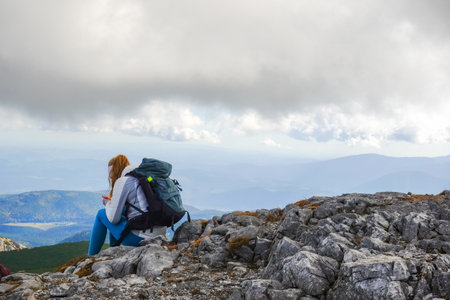Understanding Leave No Trace Principles
When planning your backcountry adventure, understanding and applying Leave No Trace (LNT) principles is essential for selecting campsites and making accommodation choices that respect the natural environment. The LNT guidelines, rooted in American outdoor ethics, provide a framework for minimizing human impact while enjoying wild spaces. These seven principles—ranging from planning ahead to disposing of waste properly—shape the way campers interact with nature. By following these standards, outdoor enthusiasts not only help preserve delicate ecosystems but also set an example of environmental stewardship for others. Choosing a campsite according to LNT means seeking durable surfaces like established campsites or bare soil, staying at least 200 feet from water sources to protect riparian areas, and avoiding disturbing wildlife habitats. Sustainable camping practices—such as packing out all trash, using established fire rings, and refraining from altering the landscape—ensure that our enjoyment today doesnt come at the expense of future generations experiences. In the context of American backcountry culture, embracing LNT isnt just about rules; its about fostering a deep respect for the land and contributing to the ongoing legacy of conservation in public lands across the United States.
2. Scouting the Ideal Campsite Location
When venturing into the American backcountry, choosing the right campsite is key to both your safety and comfort. A good campsite isn’t just about a flat patch of ground—it’s about evaluating several factors that can make or break your outdoor experience. Let’s break down the essentials for scouting an ideal spot.
Assessing Terrain
First, look for level ground that is free from rocks, roots, and debris. Avoid valleys and depressions where water can pool during rainstorms. Instead, select elevated areas that allow for proper drainage while still offering some natural wind protection from trees or shrubs.
Proximity to Water Sources
Access to water is vital for cooking, cleaning, and drinking. However, in line with Leave No Trace principles, camp at least 200 feet away from lakes, rivers, or streams to minimize environmental impact and reduce encounters with wildlife drawn to water sources.
| Factor | Recommended Distance |
|---|---|
| Water Source | ≥ 200 feet away |
| Trail or Path | ≥ 100 feet away |
| Cliff Edge | ≥ 50 feet away |
Monitoring Animal Activity
Scan the area for signs of animal trails, droppings, or dens. Avoid camping near these as they could be high-traffic routes for wildlife like deer or even bears. In many U.S. wilderness areas, it’s smart practice to store food in bear-proof containers and set up your cooking area at least 100 feet from your sleeping area.
Evaluating Weather Exposure
The United States features diverse climates—from humid Appalachians to arid deserts—so consider weather patterns when selecting your site. Choose spots sheltered from prevailing winds but avoid pitching under dead branches (widowmakers) that could fall during storms. Pay attention to sun exposure: in summer, opt for shaded locations; in colder months, choose areas with morning sunlight for warmth.
Key Takeaways for a Safe and Comfortable Stay:
- Select elevated and well-drained terrain.
- Maintain safe distances from water sources and animal activity.
- Be mindful of local weather patterns and natural hazards.
- Follow Leave No Trace guidelines to protect the environment and wildlife.
By thoughtfully evaluating each of these factors using American best practices and terminology, you’ll ensure your backcountry accommodation is both safe and enjoyable—making your adventure one to remember.
![]()
3. Regulations and Permits in U.S. Backcountry Areas
When planning your backcountry adventure, understanding the regulations and permit requirements is crucial for both safety and environmental preservation. In the United States, public lands such as national parks, national forests, Bureau of Land Management (BLM) areas, and state parks each have their own unique rules regarding campsite selection and overnight accommodations. Ignoring these guidelines can result not only in hefty fines but also negatively impact delicate ecosystems and wildlife habitats.
The Importance of Knowing Local Rules
Every backcountry area operates under a set of specific regulations designed to protect natural resources and ensure a positive experience for all visitors. These may include restrictions on where you can camp, how many people are allowed per site, fire regulations, and waste disposal protocols. For example, some parks require campers to stay at designated sites only, while others allow dispersed camping with certain distance requirements from water sources or trails. Familiarizing yourself with these details before your trip helps minimize human impact and preserves wild spaces for future generations.
Permits: Your Ticket to Wilderness Access
Many popular backcountry destinations in the U.S., such as Yosemite National Park or the Boundary Waters Canoe Area Wilderness, require advance permits for overnight stays. These permits help manage visitor numbers, reduce overcrowding, and protect sensitive environments. The process often involves applying online through reservation systems like Recreation.gov or park-specific platforms, sometimes months in advance. Be aware that some areas also require daily quotas, lottery systems, or same-day walk-up options depending on demand and seasonality.
Reservation Systems and Planning Ahead
With increasing interest in outdoor recreation, reservation systems have become standard practice for securing campsites and wilderness access in many regions. It’s essential to check application windows, cancellation policies, and required documentation—such as vehicle passes or bear canister rentals—well ahead of your trip. Missing out on necessary reservations can mean turning back at the trailhead or facing penalties if caught without proper authorization.
Responsible Recreation Starts With Preparation
By thoroughly researching local regulations and obtaining required permits before you set out, you contribute to conservation efforts and help maintain the integrity of America’s wild places. Not only does this support sustainable recreation, but it also ensures a smoother, safer experience during your backcountry journey. Always consult official land management websites or visitor centers for the most up-to-date information before finalizing your plans.
4. Site Setup and Environmental Impact Minimization
Setting up your campsite with care is crucial for preserving the beauty and health of backcountry environments. By following Leave No Trace principles and making thoughtful decisions about where and how you establish your camp, you help ensure these natural places remain pristine for future generations. Below are effective strategies and practical tips to minimize your environmental impact during campsite setup.
Choosing Durable Surfaces
When selecting a spot to pitch your tent or set up camp, always prioritize durable surfaces. These areas can withstand repeated use without significant ecological damage. Common durable surfaces include:
| Surface Type | Advantages | Considerations |
|---|---|---|
| Gravel or Rock | Minimal plant life; resists erosion | Avoid disturbing loose rocks; check for sharp edges under tents |
| Bare Soil | No vegetation to trample; often naturally compacted | Avoid muddy spots that can be damaged further by traffic |
| Dry Grass or Pine Needles | Provides cushioning and insulation; recovers quickly from use if not overused | Avoid lush meadows or fragile alpine tundra |
Camp Setup Best Practices
- Tent Placement: Set up your tent at least 200 feet from lakes and streams to protect water sources from contamination.
- Campsite Size: Keep your camp footprint small by only using as much space as necessary.
- Cooking Area: Designate one area for cooking and eating, preferably on a durable surface away from sleeping areas to avoid attracting wildlife.
- Social Trails: Stick to established paths to minimize trampling vegetation and creating new trails.
Managing Camp Waste Responsibly
Proper waste management is essential in minimizing human impact. Follow these guidelines to leave your campsite cleaner than you found it:
| Type of Waste | Recommended Action | Why It Matters |
|---|---|---|
| Food Scraps & Packaging | Packing out all waste (“pack it in, pack it out”); use bear-resistant containers if required. | Keeps wildlife safe and prevents littering. |
| Human Waste | Bury in a cathole 6-8 inches deep, at least 200 feet from water sources, or pack out using portable toilet systems where mandated. | Prevents water contamination and minimizes disease risk. |
| Gray Water (Dishwater) | Strain food particles, scatter water 200 feet from campsites and water sources. | Avoids pollution and discourages wildlife from frequenting campsites. |
| Toilet Paper & Hygiene Products | Packing out used products in sealed bags; never burn them. | Avoids unsightly litter and fire hazards. |
Treading Lightly: Final Reminders
- Avoid Digging Trenches: Modern tents don’t require trenches for drainage; digging damages soil structure and vegetation.
- No Permanent Structures: Leave the site as you found it—don’t build furniture or alter the landscape.
- Campsite Rotation: If camping with a group or multiple nights, vary tent locations when possible to avoid concentrated impact in one spot.
Your Role in Conservation Stewardship
The choices you make during site setup directly affect local flora, fauna, and fellow adventurers. By adopting minimal-impact practices, you become a steward of America’s wild places—helping keep our forests, deserts, and mountains healthy for everyone who follows in your footsteps.
5. Wildlife Safety and Food Storage
When it comes to backcountry camping in the United States, ensuring wildlife safety through proper food storage is essential for both camper protection and ecosystem health. Improperly stored food can attract animals like bears, raccoons, and rodents, leading to dangerous encounters and potentially altering animal behavior. Here are proven strategies and best practices widely used across American backcountry sites to minimize these risks.
Understanding Wildlife Behavior
Wildlife in popular camping regions such as national parks or wilderness areas have become adept at seeking out human food. Animals that become habituated to human scents may return to campsites repeatedly, which can lead to hazardous situations for both wildlife and people. Therefore, understanding local wildlife patterns is the first step in planning your food storage strategy.
Bear-Resistant Containers
Bears are a particular concern in many parts of the U.S., especially in areas like the Rockies, Sierra Nevada, and Appalachians. Many parks require campers to use bear-resistant containers or bear canisters—specialized hard-sided containers designed to keep bears from accessing food. Always check local regulations before your trip, as some areas provide food storage lockers while others expect you to bring your own approved container.
Hanging Food Properly
If bear canisters arent required or available, traditional methods like the “bear hang” are still widely practiced. To do this correctly, use a sturdy rope to suspend your food bag at least 10-15 feet off the ground and 4-6 feet away from tree trunks or branches. This makes it difficult for bears and smaller critters alike to reach your supplies. Practice this technique before heading out so you can set up efficiently even after dark.
Managing Scented Items
Its not just food that attracts wildlife—anything with a scent, including toothpaste, sunscreen, trash, and cookware, should be stored with the same care as food. Use odor-proof bags inside your bear canister or hang bag for an added layer of protection. Remember to keep your tent free of all scented items at all times.
Campsite Selection and Setup
Select campsites with established food storage infrastructure when possible. If youre in a primitive site, set up your kitchen area at least 200 feet from your sleeping area and water source. This separation reduces the likelihood of animals associating tents with food rewards.
Leave No Trace Principles
Following Leave No Trace guidelines helps preserve natural habitats and ensures that future visitors can enjoy safe backcountry experiences. Pack out all trash, even biodegradable items, and thoroughly clean cooking utensils well away from sleeping quarters. By consistently practicing these strategies for storing food and scented items, campers help protect both themselves and Americas remarkable wildlife.
6. Alternative Backcountry Accommodation Options
When planning a backcountry adventure, not every night needs to be spent in a traditional tent. Across the U.S., outdoor enthusiasts have embraced a variety of alternative sleeping arrangements, each with its own unique benefits and considerations.
Hammock Camping
Hammock camping has surged in popularity, especially in forested regions like the Appalachian Mountains and the Pacific Northwest. Hammocks are lightweight, easy to set up between trees, and offer excellent ventilation—perfect for warm, humid climates. However, it’s important to follow Leave No Trace principles by using tree-friendly straps and only hanging hammocks where allowed. Some areas may prohibit hammock use due to tree protection policies or high visitor impact.
Designated Shelters
Many long-distance trails, such as the Appalachian Trail or sections of the Pacific Crest Trail, feature designated shelters or lean-tos. These structures provide basic protection from the elements and are often available on a first-come, first-served basis. Staying at these shelters helps minimize campsite impacts by concentrating overnight use in specific locations. When utilizing these options, always respect shelter etiquette by sharing space, keeping noise down, and leaving the area cleaner than you found it.
Dispersed Camping Strategies
Dispersed camping—camping outside of developed campgrounds—is common on many public lands managed by agencies like the U.S. Forest Service and Bureau of Land Management. In the West, vast stretches of national forests and BLM land invite campers to find their own secluded spots, provided they follow rules about distance from water sources and established trails. Dispersed camping offers solitude but requires self-sufficiency: pack out all trash, avoid creating new fire rings, and strive to leave minimal trace of your stay.
Regional Variations
The type of alternative accommodation you choose often depends on local regulations and landscape characteristics. For example, hammock camping is ideal in wooded Eastern states but less practical in treeless desert areas of the Southwest. Meanwhile, designated shelters are most common along well-established hiking routes in the East, while dispersed camping is prevalent across much of the Wests open public lands.
Making Responsible Choices
No matter which alternative you select, always check local guidelines before your trip. Respect wildlife habitats, minimize your environmental footprint, and prioritize safety for yourself and fellow adventurers. By exploring these less-traditional accommodation options thoughtfully, you can deepen your connection to America’s diverse backcountry landscapes while preserving them for future generations.


